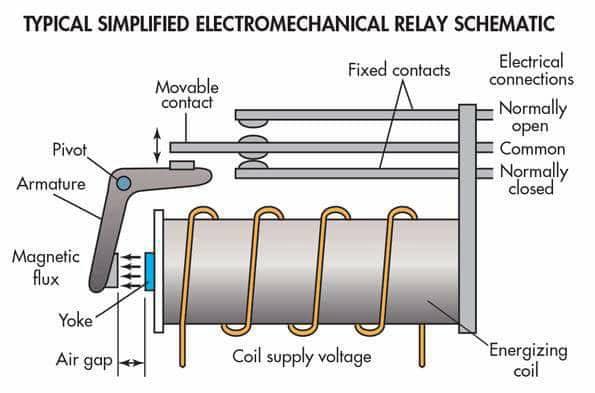While possible, it's advisable to use a driver circuit or transistor for each relay to prevent overloading the microcontroller pin. Distributing the load across multiple pins or using a relay driver IC enhances stability and avoids excessive current draw.
Relay & Switches
Relay Modules
A relay is an electromechanical switch that operates by using an electromagnet to control the switching of one or multiple circuits. It allows low-power signals to control high-power devices, making it a crucial component in various electronic applications.
Tips for Buying Relay
Before purchasing a relay, consider the following tips to ensure the right choice for your application:
- Understanding Your Application: Clearly define the requirements of your project, including voltage, current, and switching capacity. This will help you choose a relay that aligns with your needs.
- Selecting the Right Type: Relays come in various types, including electromechanical and solid-state relays. Consider the nature of your application to determine the most suitable type.
- Checking Compatibility: Ensure that the relay is compatible with the voltage and current levels of your system. Choosing a relay with a higher switching capacity than required provides a safety margin.
- Quality and Brand: Opt for relays from reputable brands known for their reliability. Quality is crucial, especially in applications where performance and longevity are essential.
- Considering Lifecycle: Some applications require relays with a high switching lifecycle. Assess the relay's durability and choose one that can withstand the demands of your project.
Types of Relays
Explore various relay types to find the one that best fits your project:
- Electromechanical Relays: Traditional relays that use an electromagnet to mechanically operate the switch. They are reliable and widely used.
- Solid-State Relays (SSR): Utilize semiconductor devices for switching. SSRs are faster, quieter, and ideal for applications where noise and speed are critical.
- Latching Relays: Maintain their state without continuous power. They are energy-efficient and suitable for power-saving applications.
- Time Delay Relays: Introduce a delay before the switch is activated, making them suitable for applications requiring time-based control.
- Protective Relays: Designed to protect equipment by responding to abnormal conditions, such as overcurrent or overvoltage.
- Polarized Relays: Have a specific direction for the flow of current. They are crucial in applications where the polarity of the signal matters.
- Bi-Stable Relays: Require a pulse of power to change state and another pulse to return. They are energy-efficient and maintain their state without continuous power.
- High-Frequency Relays: Engineered for applications involving high-frequency signals, such as RF or microwave systems.
- Automotive Relays: Designed for use in vehicles, these relays withstand the challenging conditions of automotive environments.
What Types of Relays are available based on specifications
Based on Current:
- 5A Relay: Suitable for low-current applications.
- 10A Relay: Handles moderate current loads.
- 30A Relay: Ideal for high-current requirements.
Base on Voltage:
- 5V Relay: Low-voltage activation for compatible circuits.
- 12V Relay: Commonly used in automotive applications.
- 24V Relay: Suitable for industrial control systems.
Coil Type:
- Latching Relay: Maintains its state even after power loss.
- Non-Latching Relay: Requires a continuous power supply for operation.
Switching Configuration:
- Single Pole Single Throw (SPST): Simple on/off control.
- Single Pole Double Throw (SPDT): Switches between two circuits.
- Double Pole Single Throw (DPST): Controls two independent circuits.
- Double Pole Double Throw (DPDT): Manages two circuits, each with two possible states.




